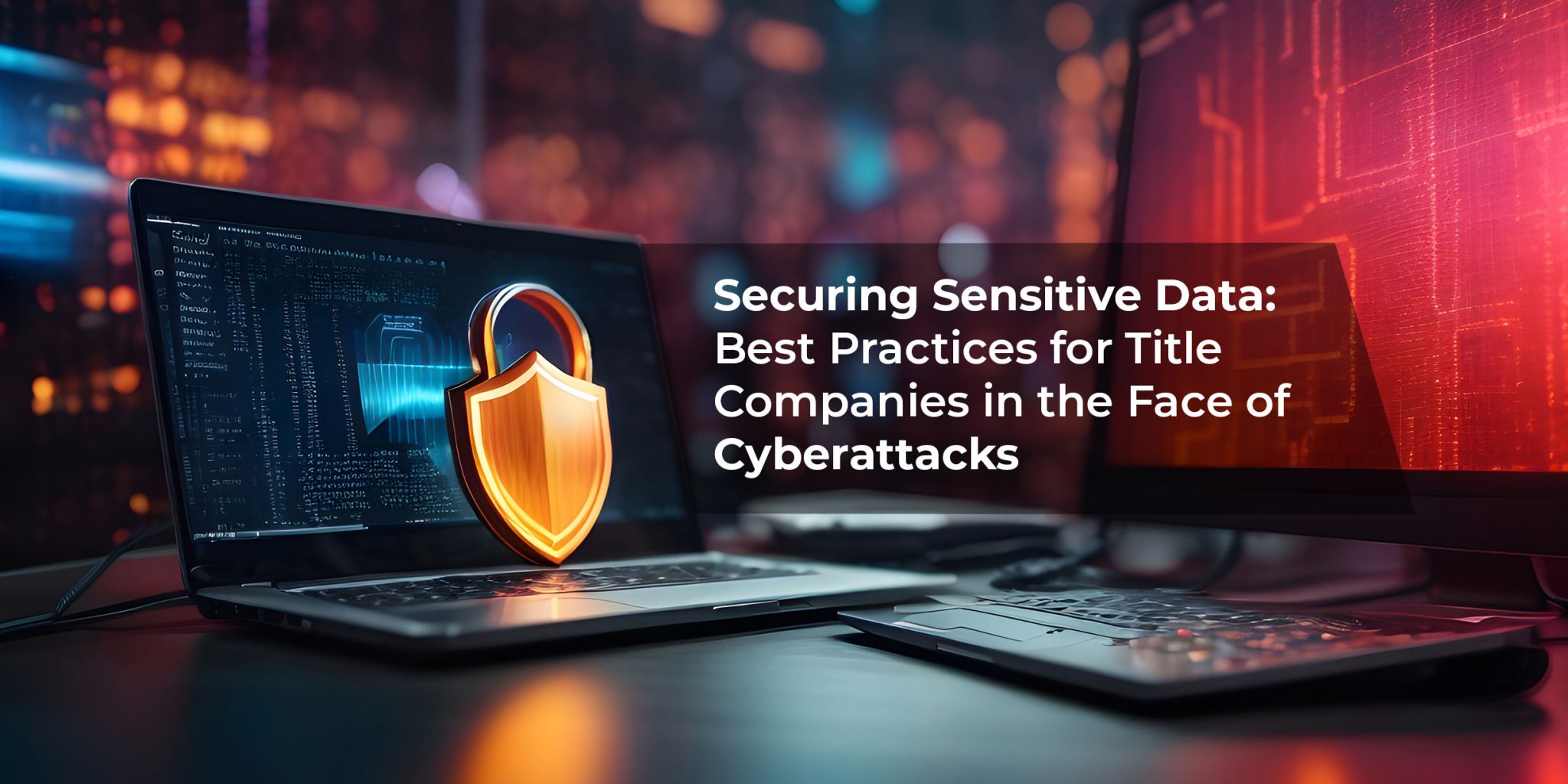Title companies are custodians of large amounts of sensitive data, from payment records and tax information to social security numbers. This makes it crucial to implement data loss prevention strategies that can act as a bulwark against cyberattacks. Worryingly, instances of cyberattacks against title companies are increasing. In a 2022 survey, 86% of respondents said that the volume of threats they have faced remained the same or grew in the last two years.
The increased reliance on digital technology has contributed to this trend. Automation platforms, cloud data storage, and employee portals can all be potential threat vectors for cybercriminals. Title companies need to weave cybersecurity into their overall mortgage risk management strategy to prevent irreversible damage to their business processes from cyberattacks. This strategy includes:
1. Using a virtual private network (VPN)
VPN technology masks your IP address so that cybercriminals cannot identify where sensitive title data is hosted, how it’s being transmitted, and exploit techniques to intercept it. Today, with remote and hybrid work being the norm in many title and mortgage businesses, employees may access sensitive data from outside of the secure corporate network.
By implementing VPN software as part of your data loss prevention strategies, you can thwart criminal attempts to break into your legitimate network traffic and intercept sensitive communications. VPN software is relatively affordable and most enterprise-grade network solutions can integrate them seamlessly.
Read more: The Impact of Digital Immune System on Mortgage Operations
2. Investing in powerful encryption
Encryption is a cryptographic coding system that converts sensitive data into an indecipherable format that can’t be unlocked without the encryption key.
Most enterprise data storage systems support encryption for data at rest — but title companies also need to pay attention to the encryption of data in motion. That way, even if a threat emerges, unauthorized users would find it impossible to understand the contents of sensitive data sets without having the encryption key at hand.
Encryption should also be enforced for employee communication and collaboration systems. For example, integrating a secure communication platform (as opposed to consumer-grade chat apps) that ensures end-to-end encryption of any data that employees exchange.
3. Practicing network segmentation
This is one of the lesser-known techniques for mortgage risk management in the context of cybersecurity, but nevertheless, a crucial step with so much of information being shared across enterprise networks.
Segmentation entails that an organization slices network pathways into multiple tunnels, each dedicated to a different form of application traffic. It makes lateral movement impossible within your network, thwarting cybercriminals, even if they manage to breach the system. For example, title companies can maintain a dedicated network segment for payments and transactions and a separate one for customer communications.
Read more: Adaptive Security Architecture: A Must-Have in Today’s Technology Landscape
4. Following vendor risk management best practices
Title companies typically work with multiple stakeholders both downstream and upstream, and these can add to existing threat vectors. Therefore, an important data loss prevention strategy is to choose your outsourcing partner wisely with an eye on their security posture.
It may be tempting to select the best-cost offshore firm by simply looking at savings opportunities — however, this can give rise to new risks. Instead, look for vendors who are ISO certified (such as Nexval) and comply with SOC Type II benchmarks, which are globally recognized certifications for data integrity, security, and confidentiality.
5. Conducting disaster recovery planning (DRP)
Mortgage risk management involves both preventive and post-crisis mitigation measures, and DRP helps your organization quickly recover if the data loss prevention strategy fails for any reason. As part of disaster recovery planning, essential customer data must be backed up to multiple locations, preferably in different forms of storage. You also need a redundant network infrastructure that can support you if the primary network is under attack.
The DRP should also include a robust communication plan to help seamlessly make the necessary disclosures in the event of a data breach. Employees must be trained in post-breach actions so that they know how to respond and prevent compound damage.
6. Adopting cloud security solutions
Today, the lion’s share of sensitive information resides in the cloud and an increasing number of mortgage industry stakeholders are moving to cloud-based systems. As a result, title companies too must provide cloud interoperability, which requires their own approach to data loss prevention strategies. In addition to traditional intrusion detection systems (IDS), title companies must invest in cloud access security brokers (CASB) and secure service edge (SASE), purpose-built for protecting the ever-widening enterprise perimeter.
Read more: Best Security Practices for Title and Escrow Companies
Discover Secure Digital Transformation
Digital technology holds tremendous potential for title companies and industry regulations are leaning more on electronic systems, such as the recent legislation on modernizing borrower communications. However, title companies need to prepare for the additional risks arising from digitization, such as high data volumes, increased remote access, and reliance on public networks.
Instead of curtailing digital transformation plans to prioritize mortgage risk management, title companies need to forge an innovation-friendly yet cautious pathway toward digital transformation. At Nexval, we incorporate security best practices into our next-gen solutions for title companies that deliver efficiency without compromising on security and data loss prevention. This enables a more sustainable transformation model that factors in the sophisticated nature of cybercrime faced by the mortgage industry today.
To know more, speak with our data loss prevention strategists.

